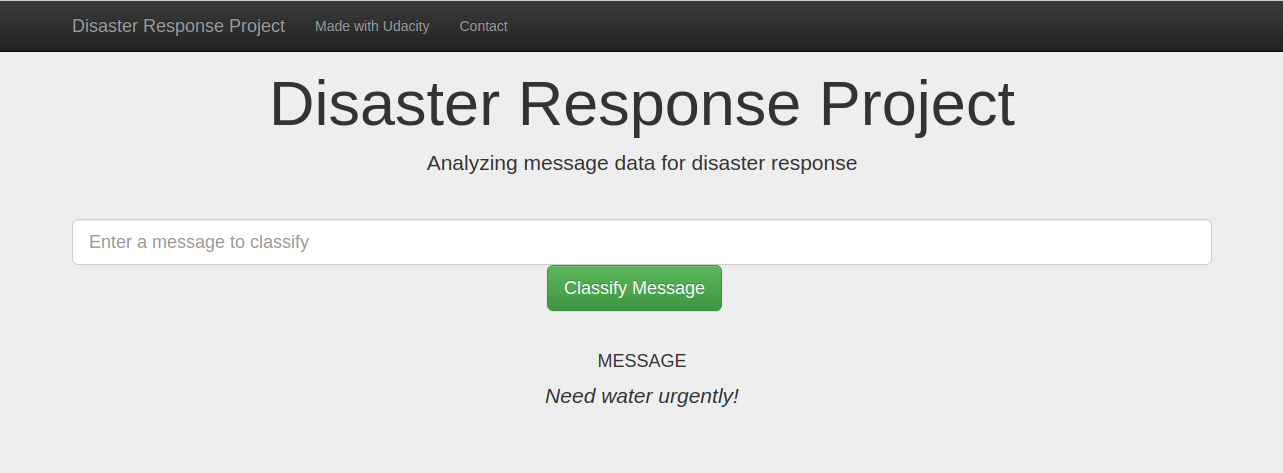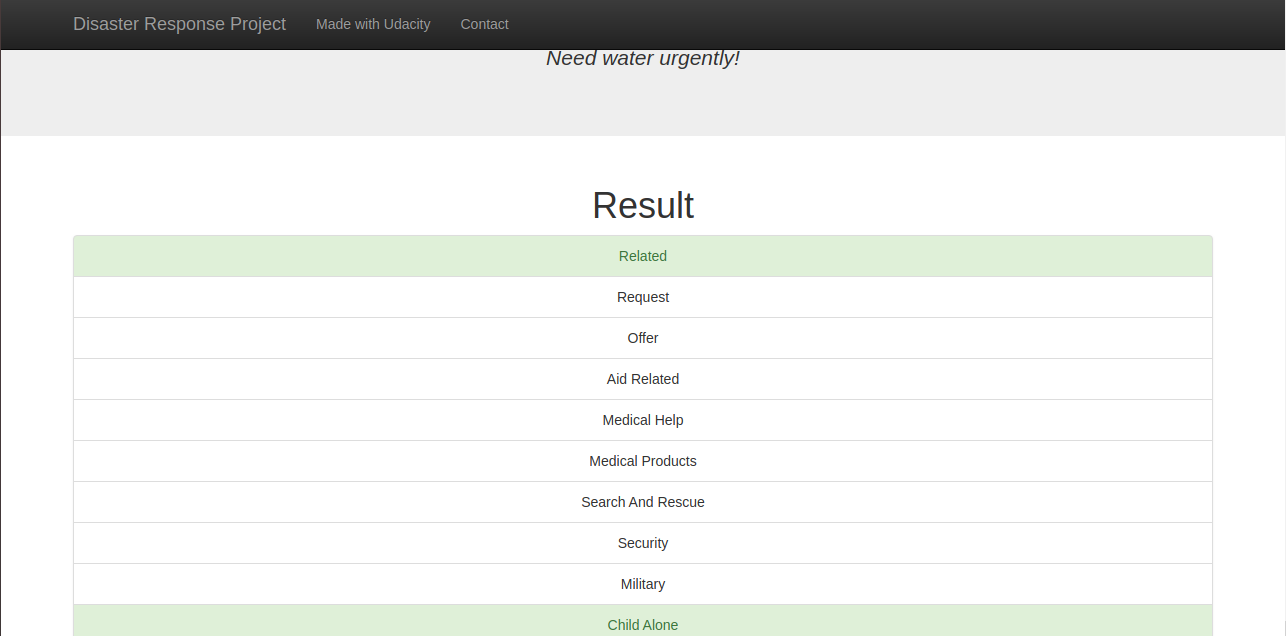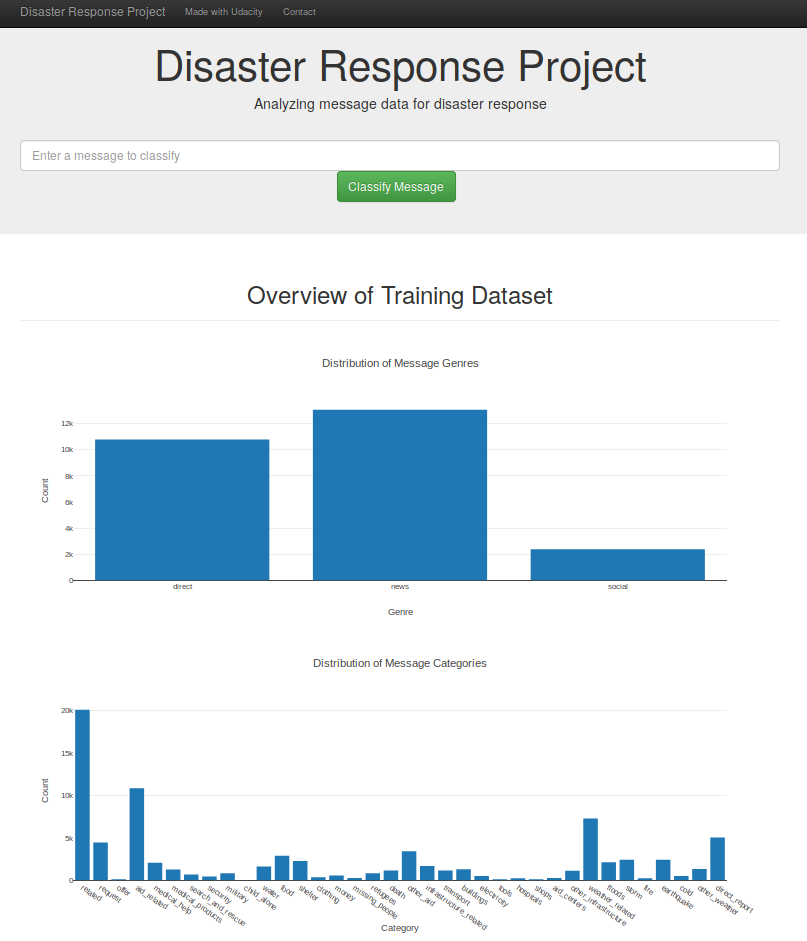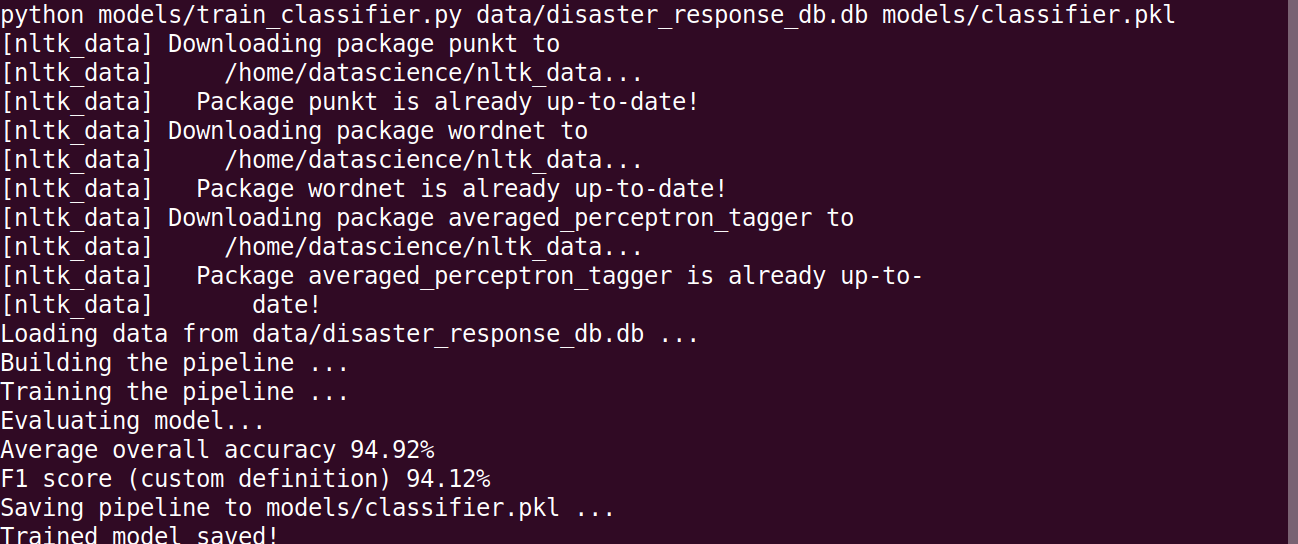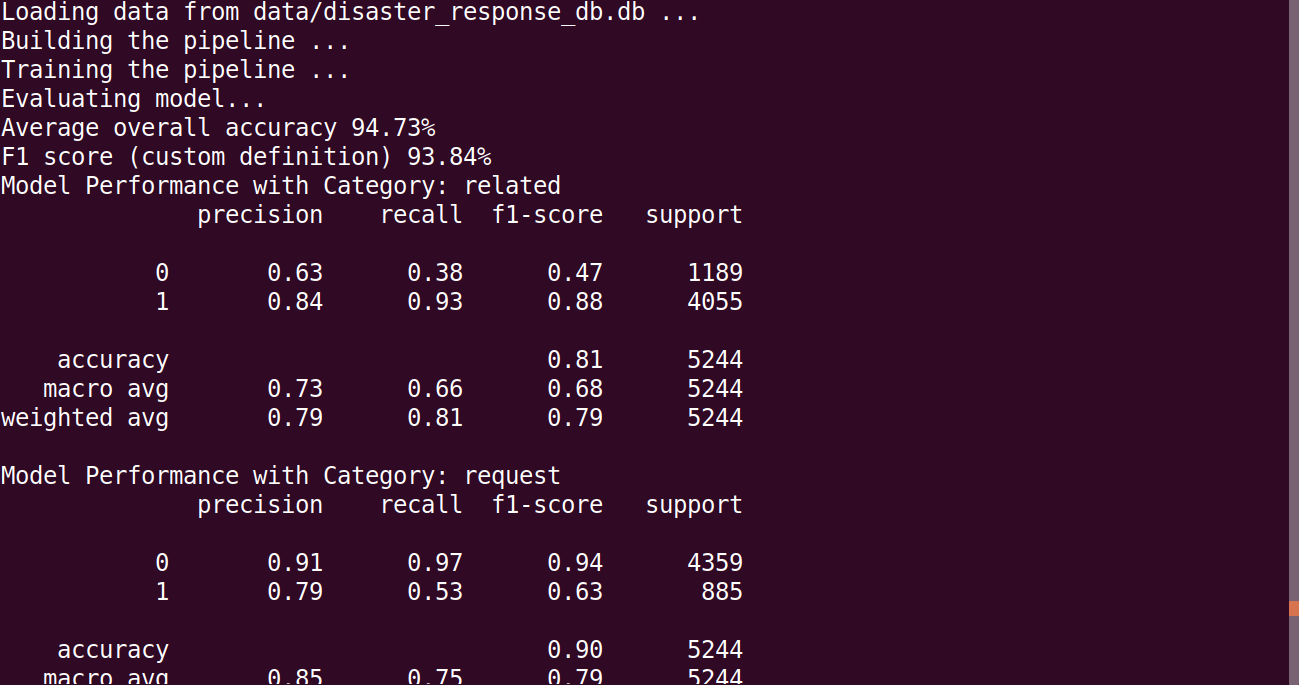This Project is part of Data Science Nanodegree Program by Udacity in collaboration with Figure Eight. The dataset contains pre-labelled tweet and messages from real-life disaster events. The project aim is to build a Natural Language Processing (NLP) model to categorize messages on a real time basis.
This project is divided in the following key sections:
- Processing data, building an ETL pipeline to extract data from source, clean the data and save them in a SQLite DB
- Build a machine learning pipeline to train the which can classify text message in various categories
- Run a web app which can show model results in real time
- Python 3.5+
- Machine Learning Libraries: NumPy, SciPy, Pandas, Sciki-Learn
- Natural Language Process Libraries: NLTK
- SQLlite Database Libraqries: SQLalchemy
- Model Loading and Saving Library: Pickle
- Web App and Data Visualization: Flask, Plotly
To clone the git repository:
git clone https://github.com/canaveensetia/udacity-disaster-response-pipeline.git
-
You can run the following commands in the project's directory to set up the database, train model and save the model.
- To run ETL pipeline to clean data and store the processed data in the database
python data/process_data.py data/disaster_messages.csv data/disaster_categories.csv data/disaster_response_db.db - To run the ML pipeline that loads data from DB, trains classifier and saves the classifier as a pickle file
python models/train_classifier.py data/disaster_response_db.db models/classifier.pkl
- To run ETL pipeline to clean data and store the processed data in the database
-
Run the following command in the app's directory to run your web app.
python run.py -
Go to http://0.0.0.0:3001/
In the data and models folder you can find two jupyter notebook that will help you understand how the model works step by step:
- ETL Preparation Notebook: learn everything about the implemented ETL pipeline
- ML Pipeline Preparation Notebook: look at the Machine Learning Pipeline developed with NLTK and Scikit-Learn
You can use ML Pipeline Preparation Notebook to re-train the model or tune it through a dedicated Grid Search section.
app/templates/*: templates/html files for web app
data/process_data.py: Extract Train Load (ETL) pipeline used for data cleaning, feature extraction, and storing data in a SQLite database
models/train_classifier.py: A machine learning pipeline that loads data, trains a model, and saves the trained model as a .pkl file for later use
run.py: This file can be used to launch the Flask web app used to classify disaster messages
- Udacity for providing an amazing Data Science Nanodegree Program
- Figure Eight for providing the relevant dataset to train the model
- This is an example of a message we can type to test the performance of the model
- After clicking Classify Message, we can see the categories which the message belongs to highlighted in green
- The main page shows some graphs about training dataset, provided by Figure Eight
- Sample run of process_data.py
- Sample run of train_classifier.py
- Sample run of train_classifier.py with precision, recall etc. for each category


